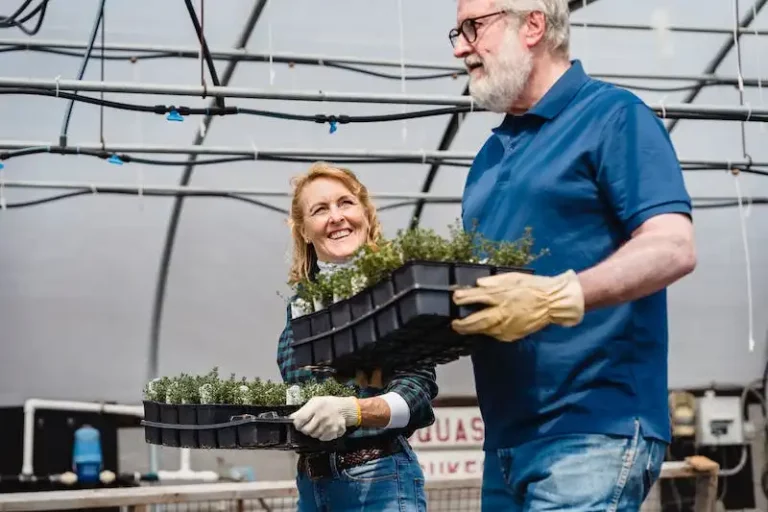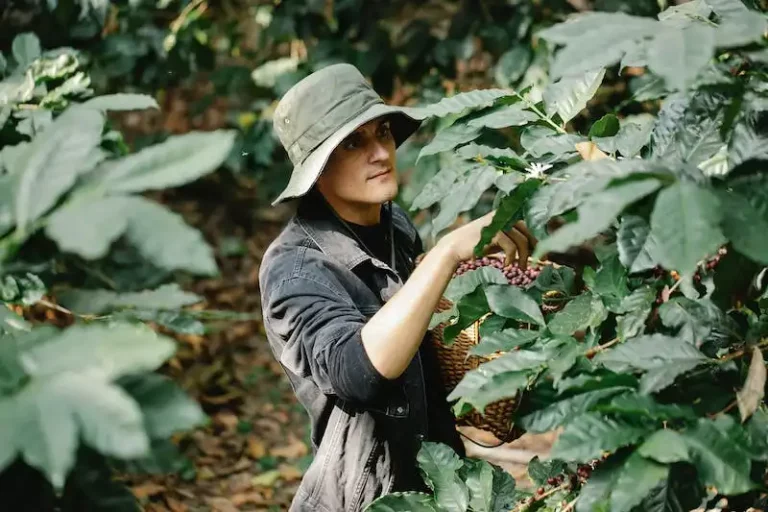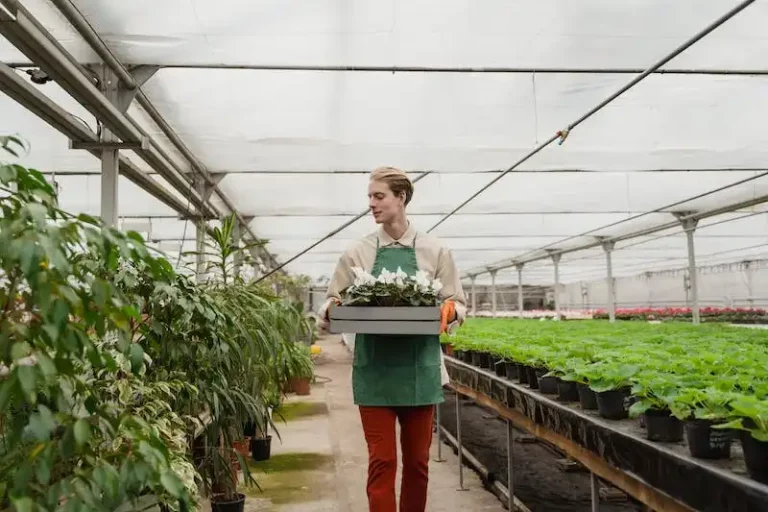Growing runner beans is an easy and productive endeavor for gardeners. These vertical plants are known for their lush foliage and attractive bean pods, making them a popular choice for many vegetable gardens. In this article, I will share my experiences and tips on sowing and growing runner beans from seed to harvest.
Runner beans can be sown earlier in the season than other beans because they are more tolerant of cooler temperatures. In our garden, we typically plant them in mid-April, although they can also be sown directly into the ground in May. The depth at which the seeds should be planted depends on the size of the seeds, but as a rough guide, planting them at a depth of about 2 inches is usually sufficient.
After sowing, the young runner bean plants will start to grow and require support. We often use a frame or trellis to keep them upright and prevent them from sprawling on the ground. This also helps to improve air circulation around the plants, which can reduce the risk of pests and diseases.
As the runner bean plants continue to grow, it’s important to regularly check for any pests or diseases and take action if necessary. Common pests include slugs, snails, and aphids, while diseases such as powdery mildew can sometimes occur in warm and humid conditions. Regularly cleaning the foliage and using natural pest control methods can help to keep these issues at bay.
Runner beans can be harvested when the pods have reached a suitable size, usually around 6 to 8 inches long. It’s best to harvest them regularly to encourage further growth and return of the beans. If the beans are left on the plant for too long, they can become tough and lose their flavor. Harvesting should be done by gently pulling the pod away from the plant.
Runner beans can also be used as “green manure” in the garden. After the harvest, the spent plants can be cut down and left on the soil to decompose. This helps to improve soil fertility and structure, making it more suitable for future crops.
In conclusion, growing runner beans can be a rewarding experience for gardeners of all skill levels. Whether you plant them in the ground or in a container, runner beans will provide a bountiful harvest and add beauty to your garden. And with proper care and attention, you can enjoy their delicious flavor while also benefiting your horticulture practices.
For more information and tips on growing runner beans, watch the video below followed by a seedling guide. There’s plenty of useful information and advice to help you get started on your own runner bean growing adventure!
Scarlet Runner Bean Phaseolus coccineus
The Scarlet Runner Bean Phaseolus coccineus is a climbing bean plant that is popular among gardeners. It is known for its vibrant red flowers and large pods, making it an attractive addition to any garden. This bean plant can grow up to 12 feet tall and requires support to climb.
When growing Scarlet Runner beans, it is important to sow the seeds directly in the garden because they do not transplant well. The seeds should be planted around 1 inch deep and at a distance of 6 inches apart. This allows for proper growth and prevents competition for resources among the plants.
Scarlet Runner beans thrive in full sun and well-drained soil. They should be watered frequently, especially during dry periods. The beans can be harvested once the pods are fully matured and have turned a deep red color.
If you want to save the seed for future planting, allow the pods to dry on the plant until they turn brown and become brittle. Then, carefully open the pods and separate the beans. Store them in a cool, dry place until you are ready to use them.
Some gardeners prefer to grow Scarlet Runner beans in containers, especially if they have limited space in their gardens. In this case, it is important to provide a strong support for the beans to climb on. A trellis or a wigwam made of bamboo poles can be used to support the plants.
Scarlet Runner beans are easy to grow and can be a fun addition to any garden. They provide not only beautiful red flowers and delicious pods, but they also attract pollinators and beneficial insects to the garden. Try growing Scarlet Runner beans in your garden and enjoy a bountiful harvest!
| Planting Depth | Planting Distance | Support Type |
|---|---|---|
| 1 inch | 6 inches apart | Climbing support like a trellis or wigwam |
Featured Articles by Season
When it comes to growing runner beans, there are some important considerations to keep in mind throughout the different seasons. Here are some featured articles that provide valuable information for each season:
Spring:
- Spring Planting Tips – Learn about the best time to plant runner beans in the spring and how to ensure their viability.
- Pest Control in Spring – Find out how to protect your runner beans from pests, such as snails, and what to do if you lack space outdoors.
Summer:
- Harvesting Tips – Discover the best time to harvest runner beans and learn about different recipes you can try with their delicious scarlet pods.
- Supporting Runner Bean Plants – Get instructions on how to support your runner bean plants using vertical structures and assess the life cycle of these attractive and decorative varieties.
Autumn:
- Storage Techniques – Learn about the best methods for storing runner beans and find out how to save seeds for the next growing season.
- Watering Tips for Autumn – Find instructions on how to water your runner bean plants regularly and what to do if there is a lack of rainfall or if the weather is too dry.
Winter:
- Winter Protection – Discover how to protect your runner bean plants during the colder months and get tips on using cardboard or building a bacterial barrier to prevent damage.
- Container Growing – Learn how to grow runner beans in containers of different sizes and assess the distance required between plants.
Whether you’re new to growing runner beans or an experienced gardener, these featured articles by season will provide you with valuable information and instructions on how to care for your plants throughout the year.
Latest Horticulture News
In our latest horticulture news blog, we have some tips on growing runner beans. Runner beans are one of the most popular crops in horticulture, and April is the best time to start sowing them in your garden.
If you’re new to growing runner beans, don’t worry, it’s easy! Runner beans are a great addition to any garden, as they are easy to grow and provide a bountiful harvest. In our blog, we provide step-by-step instructions on how to sow runner beans and care for the plants as they grow.
One of the frequently asked questions about growing runner beans is when to harvest them. We recommend harvesting the beans when they reach about 6 inches in length. At this time, they will have a full flavor and tender texture.
When it comes to watering runner beans, it’s important to keep the soil consistently moist. Runner beans require regular watering, especially during dry spells. However, be careful not to overwater, as this can lead to root rot.
Runner beans can be grown in a variety of conditions, but they prefer well-drained soils with a pH of around 6 to 6.8. It’s also recommended to plant runner beans in a sunny spot in your garden, as they need full sun to thrive.
As the plants grow, they will need support. You can use a teepee or frame to provide support for the plants, or you can build a frame with bamboo canes. Make sure the support is strong enough to withstand the weight of the plants and their fruit.
Once your runner beans are ready for harvest, it’s important to take care when harvesting the beans. Gently pull the beans off the plant, taking care not to damage the plant or the other beans. It’s also a good idea to separate the harvested beans and store them in a cool, dry place.
In our latest horticulture news, we also cover the topic of processing runner beans. Runner beans can be enjoyed fresh, but they can also be frozen or canned for later use. We provide tips on how to prepare runner beans for storing and processing.
If you’re using runner beans as a seedling for your next crop, it’s important to clean and assess the beans before sowing. Remove any dried or damaged beans, and make sure the remaining beans are in good condition.
In conclusion, growing runner beans is a rewarding experience. With proper care and attention, your runner beans will thrive and provide you with a bountiful harvest. So why not give it a try and start growing runner beans in your garden?
- Runner beans are easy to grow and provide a bountiful harvest.
- Harvest the beans when they reach about 6 inches in length.
- Keep the soil consistently moist, but avoid overwatering.
- Runner beans prefer well-drained soils with a pH of around 6 to 6.8.
- Provide support for the plants as they grow.
- Be careful when harvesting and store the beans in a cool, dry place.
- Runner beans can be processed and stored for later use.
- Clean and assess the beans before sowing.
Ask Your Gardening Question
If you have any questions about growing guide runner beans, this is the place to find answers. Whether you’re wondering where to plant them, at what point you should provide support with canes, or when to sow the seeds, we have the information you need.
When it comes to the type of runner beans to grow, one popular choice is the bicolored variety. These beans have a distinctive appearance and can make for a great decorative addition to your garden. The recommended variety to grow is the Phaseolus coccineus, known for its maturity and full flavor when cooked.
If you’re unsure how to grow runner beans from seed, we can guide you through the process. Our experts will explain the best practices for planting, including how to ensure viable seed and how to sow the seeds in order to achieve successful growth.
One common question gardeners have is whether runner beans are climbing or bushy plants. The answer is that they are climbing plants, and they require some form of support to grow. You can use canes or other structures to create a trellis or teepee-like shape to give the plants the necessary support they need.
Runner beans are known for being relatively easy to grow, but they do have certain requirements. They prefer well-drained soil and regular watering, especially during hot summer months. It’s important to water them consistently, as they can suffer if they receive too much or too little water. By following these watering requirements, you can ensure healthy growth and a bountiful harvest.
If you’re interested in growing runner beans for their ornamental value, you may want to consider planting some decorative varieties. These beans come in a range of colors and sizes and can add a beautiful touch to your garden. Just be aware that some decorative varieties may not produce as many beans as common varieties, so you may need to balance aesthetics with the desire for a large crop.
When it comes to diseases, runner beans can be susceptible to bacterial infections. If you notice any signs of disease, it’s important to take immediate action to prevent the spread to other plants. Isolation and proper care can help minimize the risk of bacterial infection and keep your plants healthy.
If you’re unsure about the best time to harvest your runner beans, you can look for some key signs. The beans should be fully developed but not overly mature. The pods should be green and firm, and the bean seeds inside should be plump. Once harvested, the beans can be processed and used in a variety of dishes.
By following the proper care and planting techniques, you can enjoy a successful runner bean harvest in your garden. Whether you’re a beginner or an experienced gardener, we’re here to help with any questions or concerns you may have along the way. Happy gardening!



